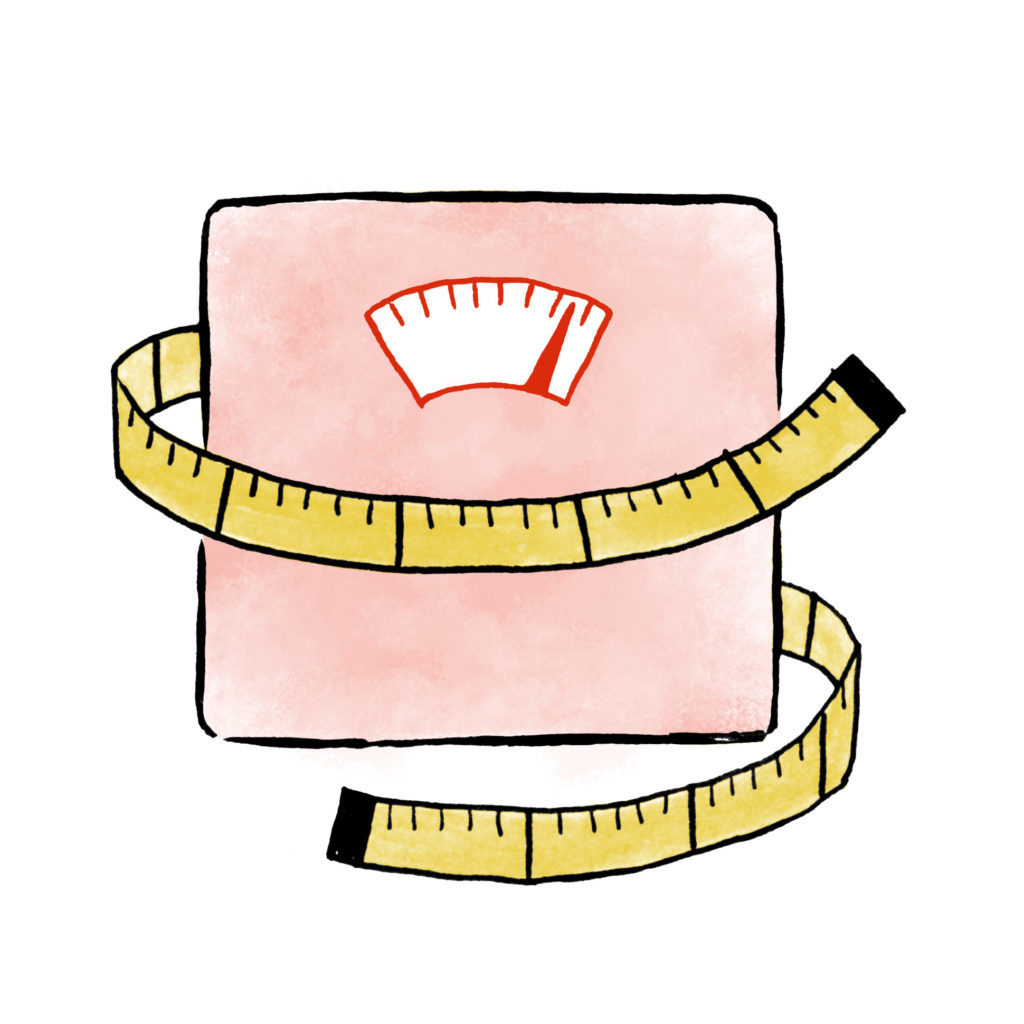Plus four other stats on women and health.
By Shelby Woods, Illustrations by Jessica Wetterer
18.5 to 24.9 When it comes to measuring that ever-stubborn body fat, there’s one crucial number to consider:  body mass index. Based on an individual’s weight and height, BMI is regularly used as a screening tool to determine whether a person is at risk for particular health problems, with a higher BMI number indicating more body fat and more risk. According to the American Cancer Society, a healthy BMI is between 18.5 and 24.9. For instance, a 5-foot- 4-inch tall woman should weigh between 110 and 140 pounds, indicating a BMI of between 19 and 24, to be considered to have a healthy weight.
body mass index. Based on an individual’s weight and height, BMI is regularly used as a screening tool to determine whether a person is at risk for particular health problems, with a higher BMI number indicating more body fat and more risk. According to the American Cancer Society, a healthy BMI is between 18.5 and 24.9. For instance, a 5-foot- 4-inch tall woman should weigh between 110 and 140 pounds, indicating a BMI of between 19 and 24, to be considered to have a healthy weight.
$46.3 Billion Maintaining a healthy lifestyle is often broken down as 20 percent exercise and 80 percent diet. Balancing weekly exercise with whole foods is a key part of losing weight, which may be why some experts claim as many as 50 percent of women are on a diet at any given time. In fact, according to livestrong.com, “Americans spend more money in dieting, dieting products and weight-loss surgery than any other people in the world.” The enticement of a quick fix to excess fat could be why a 2004 survey, the most recent year it was conducted, found Americans spent $46.3 billion on weight-loss products.

65 Percent Many women cite intimidation as a reason for avoiding the gym. In fact, as many as 65 percent of U.S. women say they don’t go to the gym, often because of fears of being judged. According to Fitness Magazine, of the 35 percent of women who do attend some sort of gym, only half use weight machines and 1/3 lift free weights. Though exercises involving aerobics are an important part of maintaining a healthy lifestyle, resistance training contributes to reducing the risk of diabetes, heart disease and arthritis. Lifting weights also helps reduce fat by increasing lean body mass.

2.7 Percent According to a study from the Mayo Clinic, only 2.7 percent of Americans live a healthy lifestyle. The study notes four key components of healthy people: not smoking, a nutritious diet, at least 150 minutes of exercise a week and a low body-fat percentage (less than 20 percent for men and less than 30 percent for women).
10 Superfoods According to Health magazine, there are 10 specific superfoods that can provide women with major health benefits, including boosting energy, building bone mass, fighting disease and busting fat. Superfoods women should consume regularly include wild Alaskan salmon, oats, wild blueberries, avocados, red beans, Greek yogurt and nutrient-packed broccoli. But it’s not all about lean protein, fruits and vegetables. Health also recommends women nosh on 1/4 ounce of dark chocolate a day to lower blood pressure, sharpen thinking and hydrate skin.


